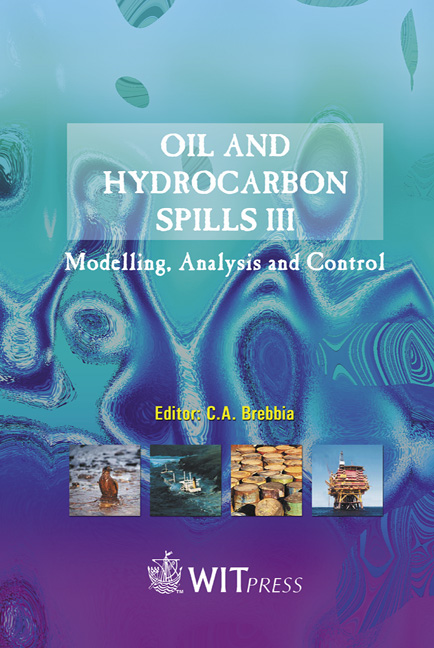Deleterious Properties Retained By Diesel Fuel Spilled In Northern Canada In Winter
Price
Free (open access)
Transaction
Volume
59
Pages
Published
2002
Size
452 kb
Paper DOI
10.2495/OIL020351
Copyright
WIT Press
Author(s)
W. L. Lockhart, B. N. Billeck, R. W. Danell, D. A. J. Murray, R. K. York, D. Tilden, K. Hall & G. A. Stern
Abstract
Deleterious properties retained by diesel fuel spilled in northern Canada in winter W.L. Lockhart1, B.N. Billeck1, R.W. Danell1, D.A.J. Murray1, R.K. York2, D. Tilden3, K.Hall4 & G. A. Stern1 1 Department of Fisheries and Oceans, Winnipeg, Canada 2 Canadian Food Inspection Agency, Winnipeg, Canada 3Environment Canada, Yellowknife, Canada 4 Department of Fisheries and Oceans, Yellowknife, Canada Abstract In March 1983, a fuel truck overturned at a bridge crossing the Cameron River, near Yellowknife, Northwest Territories, Canada, and spilled a quantity of diesel fuel. The spilled diesel fuel penetrated the snow cover, moved along the frozen surface of the ground and entered the ice-covered Cameron River. A sample of diesel fuel was recovered from beneath the river ice eight days after the initial spill. This sample from the river was compared with that from the original cargo in the truck in three quantitative and independent ways, namely gas chromatography with a comparison of the sample patterns by principal component analysis, acute toxicity to fish, and tendency to taint fish with an oily taste. The two samples were essentially the same in all respects, except for some subtle but consistent differences in the relative proportions of some individual hydrocarbons. The river samples were shown to contain slightly higher proportions of the C8 to C9 alkane components. Slightly lower proportions of alkanes eluted after C12, possibly as a result of losses due to sediment adsorption or fractionation under the ice. Evidently the low ambient temperatures and cover by ice and snow reduced greatly the 'weathering' phenomenon often described with spilled oils, and permitted the oil to retain its toxic and tainting properties. Introduction Petroleum oils discharged into natural waters undergo changes in composition described as "weathering" [1] with the result that the oil becomes less harmful to
Keywords





